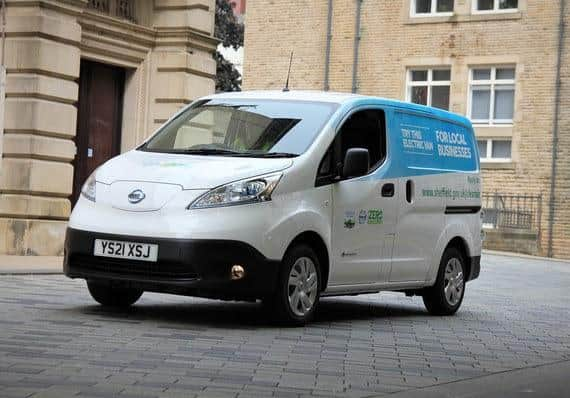Sheffield Clean Air Zone map: who will it affect and what support will there be to upgrade vehicles?
and live on Freeview channel 276
Sheffield Council leaders are due to approve plans for this Clean Air Zone (CAZ) in a special meeting next week.
Air pollution contributes to 500 early deaths a year in Sheffield and parts of the city have exceeded legal limits of nitrogen dioxide since 2010.


Advertisement
Hide AdAdvertisement
Hide AdAs a result, Sheffield was told by the Government to reach legal limits in the shortest time possible.
Plans for a CAZ were first announced in 2018 but the council delayed implementing it due to Covid-19, saying the situation in 2020 was “dramatically different” to the one in which original proposals were developed and carried out a review to see if it was still needed.
Where is it, what’s the cost and who will be affected?
The zone will cover the inner ring road and city centre, including Park Square and the A61 / Parkway junction.
Taxis and LGVs that do not meet the emission standards will be charged £10 a day and coaches, buses and HGVs will be charged £50 a day.
Advertisement
Hide AdAdvertisement
Hide AdREAD MORE: Sheffield Clean Air Zone: Who will it affect and what support will there be to upgrade vehicles?
It will be enforced using automatic number plate recognition cameras.
What vehicles are exempt from the Clean Air Zone?
Drivers of private cars and motorbikes will not be charged at this time. The council said this was because they make up 80 percent of road traffic but contribute 50 percent of pollution whereas buses, HGVs and taxis are responsible for half of Sheffield’s air pollution but make up only 20 percent of traffic.
There are national exemptions for military, historic and agricultural vehicles.
Advertisement
Hide AdAdvertisement
Hide AdSheffield is planning to also have local exemptions for: emergency service vehicles like ambulances and fire engines, local charities who operate minibuses on a community transport permit and businesses which have ordered a compliant vehicle but have not received it due to waiting lists or supply chain delays.
What standard does my engine need to be to avoid the charge?
Buses, taxis, vans, lorries and coaches will need to meet the Euro 6 diesel or Euro 4 petrol emissions standard.
This has changed for taxis which were going to be charged unless they were electric or ultra low emission under original CAZ proposals.
Advertisement
Hide AdAdvertisement
Hide AdWhat support will be available for affected drivers and when?
Just under £24 million was given to deliver Sheffield and Rotherham’s Clean Air Plans. Of that, £3.5 million was allocated from the implementation fund, which will be used for setting up the charging zone and road schemes, and £20.4 million from the Clean Air Fund, which will be used to help drivers upgrade.
Funding to help taxi drivers and businesses upgrade vehicles will be administered from mid-2022 onwards.
This includes:
Up to £10,000 grants for electric/ULEV wheelchair-accessible hackney carriages.
Advertisement
Hide AdAdvertisement
Hide AdUp to £3,000 grants for local private hire taxi drivers upgrade to electric or ultra-low emissions vehicles.
Up to £3,500 grants for local businesses to upgrade to electric or ultra-low emissions vans.
A consultation on the proposals focussing on packages of support will start in November.
